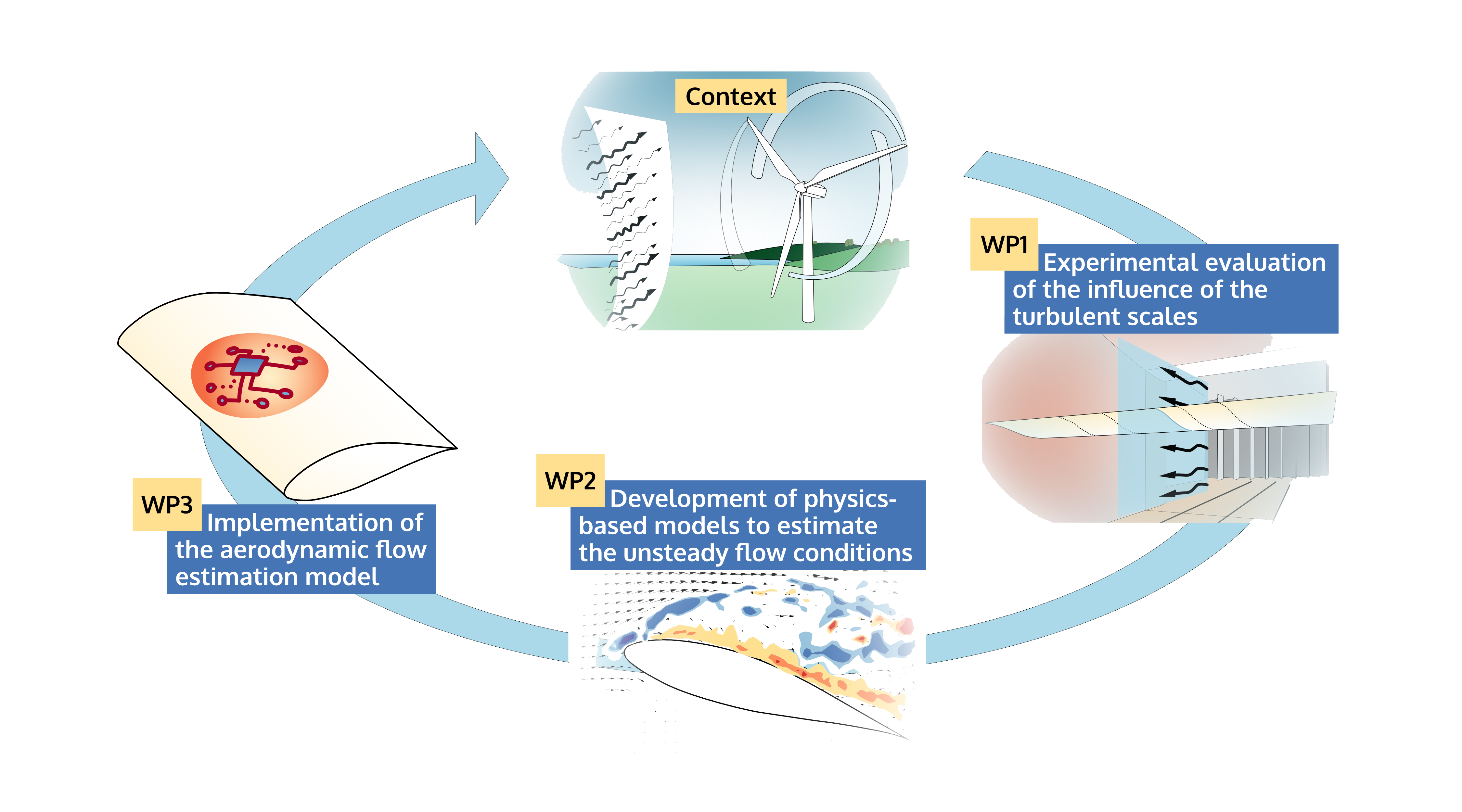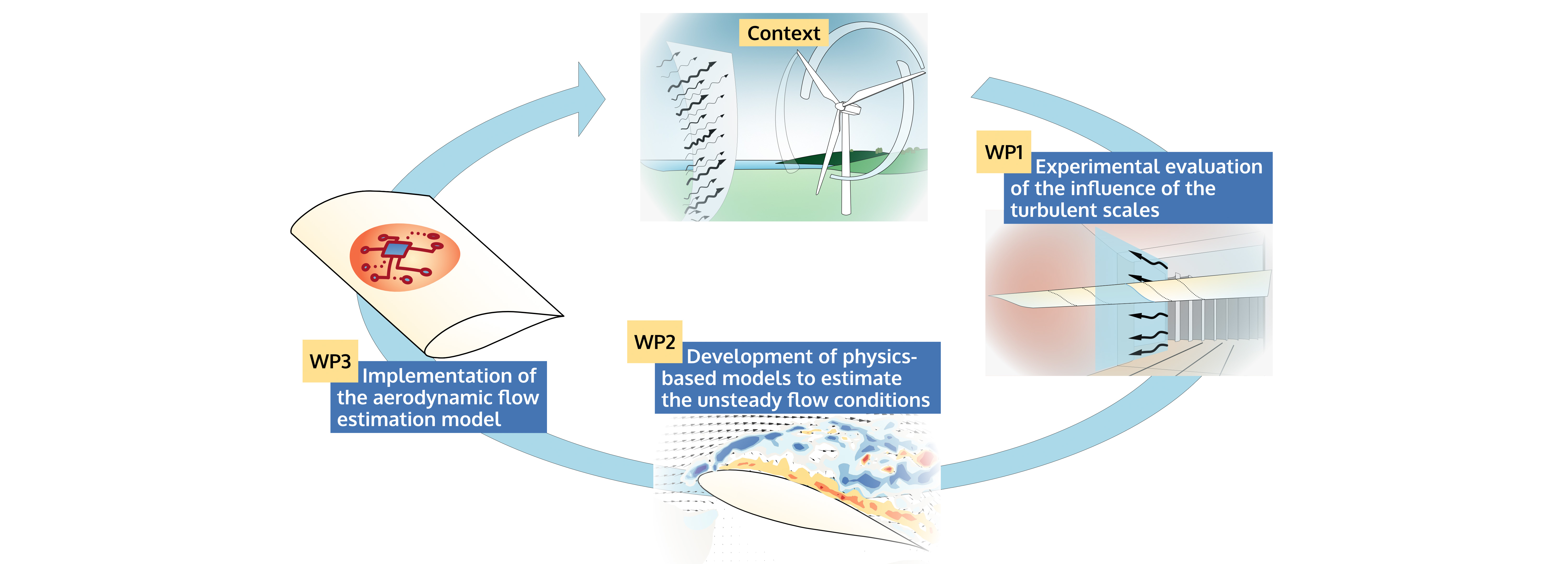Research project
Mistery
Modelling and estimation of unsteady aerodynamic flow at high Reynolds number
In the turbulent atmospheric boundary layer, an increasing number of engineering systems experience aerodynamic unsteady flows, including wind turbines, helicopters, and air vehicles. Interactions with the turbulence in the atmosphere can lead to large load fluctuations, shortened lifetime and reduced effectiveness of aerodynamic controllers. Understanding and modelling these interactions is therefore a key topic in the field of unsteady aerodynamics, but little has been investigated at high Reynolds numbers (> 10^6) where wind turbines and large air vehicles operate. Moreover, at angles of attack near the maximum of lift of an airfoil, the flow becomes three-dimensional (3D). A better understanding of unsteady turbulent flows over airfoils would help to improve the estimation of the dynamic forces and to develop more efficient models to control airfoils in these environments. However, today this is not possible as there is no experimental data at high Reynolds numbers with a controlled turbulent inflow available, in which the dynamic 3D flow structures and their surface pressure responses are measured.
This SNF-ANR joint project focuses on the following three key research challenges:
- Evaluate the influence of different turbulent scales on the load fluctuations and flow separation over airfoils at high Reynolds number.
- Develop physics-based low-order models to estimate the turbulent aerodynamic flow with a quantified uncertainty and with a minimum amount of sensors.
- Implement the most appropriate low-order model into a fast edge computing robust measurement system to estimate the unsteady loads.
To address these key research challenges, the consortium consists of interdisciplinary researchers in fluid dynamics (OST-IET, CSTB, EM2C), structural dynamics and data-driven modelling (ETHZ-CSMM) and electronics for sensors and embedded systems (ETHZ-PBL). The consortium will use a full-scale section of a wind turbine blade already built at CSTB in their Jules Verne wind tunnel, unique in Europe, where the inflow can be customised for different length and temporal scales of turbulence.
The project comprises three different work packages. In the first work package, the spatio-temporal characteristics of the unsteady flow will be analysed based on wall pressure measurements and time-resolved flow field data in the CSTB wind tunnel, and the tested turbulent scales affecting the most the unsteady aerodynamic loads on the airfoil will be evaluated. The second work package aims to develop low-order models, estimating the unsteady flow structure and the corresponding load fluctuations through identification of the unsteady inflow with a minimum amount of sensors. Thanks to the available benchmark developed in the first work package, a physics-based low-order model as well as physics-informed data-driven models will be developed. Our interdisciplinary approach is expected to deliver original outcomes including a combined method merging physics-based models, deep/machine-learning techniques and embedded signal processing. The last work package is dedicated to the implementation of the low-order model on computationally re-configurable constrained processors. The sensor system will be designed as an open research platform and it will be evaluated in the CSTB wind tunnel, then on operating wind turbines. This project will provide valuable and unique experimental data, open platform and novel low-order models to the research community by bridging existing gaps between different fields of research.





Duration: 01.12.2022 - 01.01.2025
Team:
Dr. Sarah Barber
IET Institut für EnergietechnikFachbereichsleiterin Wind Energy Innovation
+41 58 257 42 62sarah.barber@ost.ch

Dr. Julien Deparday
IET Institut für EnergietechnikWissenschaftlicher Mitarbeiter
+41 58 257 43 34julien.deparday@ost.ch


